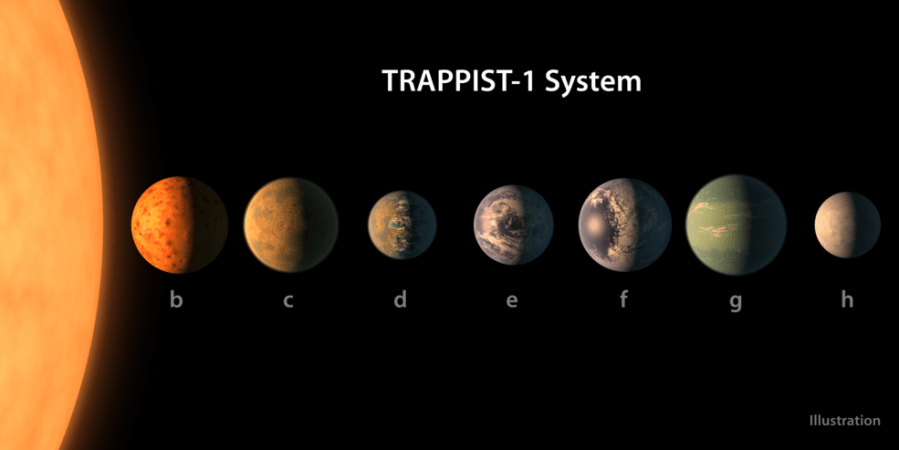
Two teams of researchers figured out the key issues regarding the evolution of life in the TRAPPIST-1exoplanet system, which was discovered by NASA's Spitzer Space Telescope earlier this February.
ALSO READ: Huge 'alien footprints' found in Indian village spark fear among residents [VIDEO]
The teams were led by researchers of the Harvard-Smithsonian Center for Astrophysics (CfA) in Cambridge, Massachusetts.
According to them, the powerful radiation of the star in TRAPPIST-1 system makes it less habitable.
The star is a red dwarf and is less massive and way dimmer in comparison to the Sun. The star spins at a great pace and produces energetic flashes of UV radiation.
Various factors that could impact the conditions that prevail on the surfaces of planets orbiting red dwarfs were being analysed by the first team of researchers.
The scientists examined the impact of temperature on the ecology and development of life in the TRAPPIST-1 system. They also studied if the UV radiation emitted by the central star could corrode the atmospheres prevailing around the seven planets. The proximity between the star and the planets in this system is closer in comparison to the Sun and Earth, while three of them are situated well within the habitable zone.
"The concept of a habitable zone is based on planets being in orbits where liquid water could exist," said Manasvi Lingam, a Harvard researcher who led the study, according to a statement.
"This is only one factor, however, in determining whether a planet is hospitable for life," Lingam added.
Lingam and his co-author, Harvard professor Avi Loeb, found that UV radiation would bombard the planets in the TRAPPIST-1 system with an intensity which would be way greater than what Earth experiences.
"Because of the onslaught by the star's radiation, our results suggest the atmosphere on planets in the TRAPPIST-1 system would largely be destroyed. This would hurt the chances of life forming or persisting," said Loeb in a statement.
According to the estimations of the researchers, the chances of complex life to exist in the habitable zone on any of the three habitable planets of the TRAPPIST-1 system is less than one percent than that on Earth.
In another research by a team of researchers from the CfA and the University of Massachusetts in Lowell, it was found that the parent star in TRAPPIST-1 system posed a danger to life present on the planets surrounding it. Similar to the Sun, the TRAPPIST-1 star emits a stream of particles in space.
However, the pressure applied by the wind from TRAPPIST-1's star on its planets is 1,000 to 100,000 times greater than what the solar wind exerts on the Earth, a statement revealed.
The star's magnetic field will connect to the magnetic fields of any planets in orbit around it, allowing particles from the star's wind to directly flow onto the planet's atmosphere, the authors argued. If this flow of particles is strong enough, it could strip the planet's atmosphere and perhaps evaporate it entirely.
"The Earth's magnetic field acts like a shield against the potentially damaging effects of the solar wind," said Cecilia Garraffo of the CfA, who led the new study. "If Earth were much closer to the Sun and subjected to the onslaught of particles like the TRAPPIST-1 star delivers, our planetary shield would fail pretty quickly."
While these two studies suggest that the likelihood of life may be lesser than previously thought, it does not mean the TRAPPIST-1 system or others with red dwarf stars are devoid of life.
"We're definitely not saying people should give up searching for life around red dwarf stars," said Garraffo's co-author Jeremy Drake, also from CfA. "But our work and the work of our colleagues shows we should also target as many stars as possible that are more like the Sun."








